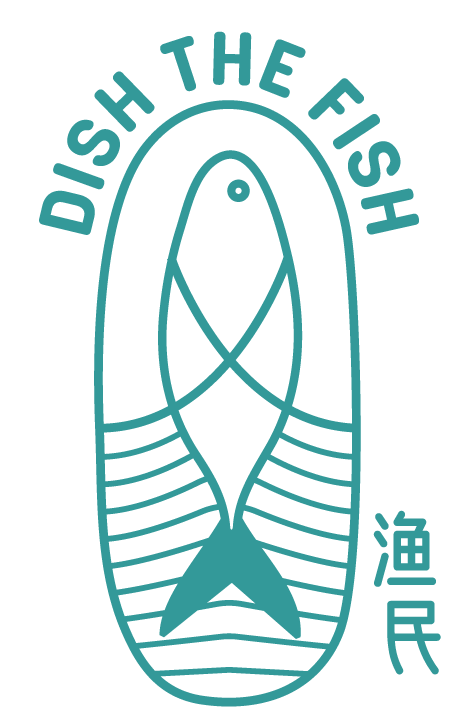ALL YOU NEED TO KNOW ABOUT WILD-CAUGHT SEA WHITE (ANG KAR) PRAWNS
Share
Prawns are well-liked due to the sweetness that they lend in many dishes from stir-fried vegetables to soups. There are hundreds of species of prawns out there with different naming conventions across countries and even within countries. Many passed down recipes from grandmothers specify that a specific prawn be used for a specific dish because the level of sweetness and crunchiness does vary from breed to breed and can really affect the taste of the dish. In this post, we will be highlighting the characteristics of wild-caught sea white prawns, its nutritional benefits, as well as common questions that we get on these prawns.
What is unique about the wild-caught sea white prawns (红脚虾) sold at Dishthefish?
Our wild-caught sea white prawns (红脚虾), also known locally as Ang Kar Prawns, are wild-caught from the neighbouring Indonesian islands (FAO 71) and transported to Singapore in its purest form (iced sea water). Ang Kar prawns can only be found in deep, clear waters, which is why they cannot be caught locally. The Ang Kar prawns are caught by net from deep waters and so during the harvest, the prawn heads may get loosened by the effect of pulling the prawns away from the net. This is the reason why many wild-caught deep sea water prawns may not look as perfect and intact as farmed prawns harvested from shallow ponds. The uncomfortable fact that many consumers looking for wild, natural and organic produce have to swallow is that what is wild and natural is usually imperfect.
At Dishthefish, we only work with selective, trusted suppliers. If we have any doubt about the provenance of a certain product, we will prefer not to sell it. This is the reason why we do not currently sell any farmed prawns.
What are the benefits of eating wild-caught sea prawns?
Prawns are rich in the minerals zinc and selenium, antioxidants that help to maintain healthy cells and lower oxidative stress in your body, reducing inflammation and enhancing immunity. Astaxanthin, a powerful antioxidant, is also present in prawns. Prawns are also a good source of omega-6 and omega-3 fatty acids. Although prawns and other shellfish do contain cholesterol, they are low in fat and particularly low in saturated fat. Most people do not need to cut down on the cholesterol that’s found in foods. It is more important to cut down on foods which contain saturated fats. That’s because saturated fats affect how the liver handles cholesterol.
Wild-caught prawns are antibiotic-free, and since we only work with trusted suppliers, we can ensure that no nasty chemicals have been added to the prawns too.
How do I tell if my chemical-free, wild-caught prawns are fresh?
Once a prawn dies, the prawn will release a digestive enzyme from the head, causing the head to turn black and the meat to turn mashy. When raw, if the head shows some black color, but the meat in the tail still appears translucent and firm, then it is still fresh. Prawns should have a mild fresh smell of the sea and should not have a strong ammonia smell
Exceptions:
✔ Some heads of the prawns may be loose — this is normal in wild, net-caught prawns as the pressure from being trapped in a net, followed by being unloaded from the net may lead to some heads getting dislodged.
✔ Prawns may occasionally have a shell discolouration called melanosis. This is not spoilage, but rather an enzymatic reaction caused by naturally occurring amino acids and sunlight. The prawns are still of good quality and safe to eat.
✔ Some prawns may be observed to have soft and broken shells. This may not be an indicator of poor quality as the shell could be soft due to the process of moulting (shell shedding), which is common in the life cycle of a prawn. When cooked, the prawn meat may stick to the shell but other than that, there is no impact on prawn quality.
What are the characteristics of wild-caught sea white prawns (红脚虾)?
| Characteristic | How it affects cooking | Specific to sea white (ang kar prawns) |
| Thickness of shell | For dishes with sauce and where you are cooking the prawns whole with their shell on, thin-shelled prawns are good because the sauce permeates into the shell and infuses well with the taste of the prawn. Thin-shelled prawns also tend to be cooked faster, so you will have to be careful not to overcook them. | The shell of sea white (ang kar) prawns are soft and thin, which makes it best for stir-frying with sauce or for use in soup/ steamboat. |
| Crunchiness of meat | Generally, crunchy prawns taste better when coated and deep-fried. However, the level of crunch preferred is subjective from person to person. | Sea white prawns are bouncy and crunchy (but less so than Tiger Prawns). |
| Flavour of meat | The level of sweetness and savouriness differs distinctly across breeds and place of catch/ farming method. | Mildly sweet. This breed is popular as the mildly sweet taste is easily accepted by many. Simple poaching or drunken prawns are suitable. |
Cooking tips: As prawns cook really quickly, make sure not to overcook them or they will turn rubbery. Prawns are also highly sensitive to heat and you should only be thawing them in the chiller or under cold water.
If you find that your prawn meat is sticking to the shell after cooking, it is most likely overcooked. As a guide, small to medium sized shrimp with their shell on will take only 3-4 minutes to be cooked. If shell-off, you may look at this infographic as an easy guide. The prawn should remain curled in the shape of the alphabet "C".
You may get our sea white prawns and our handmade prawn paste on our online shop or at our retail outlets.


